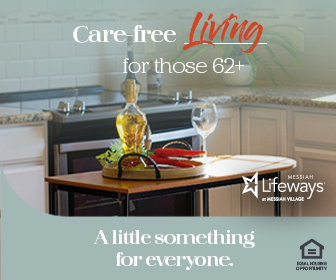Similar yet different
Back in March 2013, I wrote an article examining the differences between Assisted Living Residences (ALR) and Personal Care Homes (PCH) in Pennsylvania. It stated that prior to January 2011 there was no true difference between these levels of care across the commonwealth. They were essentially synonymous, interchangeable terms. However, most facilities referred to themselves as “assisted living” rather than a “personal care home” because it sounded more pleasant and inviting. But if pressed to see their provider license, every single site would have donned a Personal Care Home certificate.
That all changed when PA Senate Bill 704 was signed in 2007 and then enacted in January 2011 by the Intra-Governmental Council on Long-Term Care. It defined and established assisted living as a separate form of long-term care in Pennsylvania.
Fast-forward 4 years and the landscape has not changed much. Many consumers and even healthcare professionals still aren’t aware or fully understand the difference. Also the number of Personal Care Homes still far outweighs the number of ALRs across the state. For this reason, I am re-releasing the article to continue help others understand and appreciate the difference and to spark conversation about its future.
So Why the Change?
What prompted this additional level of care across the commonwealth? First, the state felt it needed to do better job of balancing public funding of institutional care with home and community programs for the PA’s seniors. Secondly, the philosophy of more choice was essential. Also according to an AARP study, “95% of older Pennsylvanians want alternatives to nursing home placement,” plus “another option was needed for many individuals who couldn’t live at home anymore, but didn’t require round the clock nursing care services.” The study also said national research showed “assisted living facilities would cost between one-half and two-thirds of the cost of daily skilled nursing care.” Additionally the bill was to be a starting point to help shift Medicaid (Medical Assistance) dollars to assisted living and away from nursing homes and therefore reduce the reliance on the much more expensive alternative.
Essentially assisted living was created to bridge the gap in care between Personal Care Homes and skilled nursing homes, but at a lower cost than nursing and in a setting that could allow residents to “age in place” for a longer period of time.
Specific Differences
Assisted Living Residences are licensed under 55 Pa. Code, Chapter 2800 by the Office of Long-Term Living. Though it does provide similar care to Personal Care Homes, they do have the capability to care for people that require heavier care for a longer period of time. Personal Care Homes are governed by the Department of Public Welfare whose regulations maintain certain limits on the care and setting that they can provide.
According to the Office of Long-Term Living, Assisted Living Residences are different from a Personal Care Home in 3 ways: concept, construction and level of care. The concept focuses on allowing a resident to “age in place” for a longer period of time before having to move to a nursing facility when their needs increase. Next, ALR construction would require larger units, private bathrooms, and the “capacity” for kitchen facilities. This model would allow for more privacy and maximum independence. Regarding level of care it would provide more assistance for a resident whose needs become too great for a Personal Care Home.
Two examples of a Personal Care Home resident needing to move to a nursing facility could include the following: if the resident requires multiple caregivers to transfer them from their bed to the toilet or if another resident needed help emptying their catheter. However, if those two people lived in an Assisted Living Residence they could remain there because of the required higher staffing ratios and specialized training for needs such as catheter care.
Interestingly, larger Personal Care Homes meet certain ALR requirements, particularly in the area of construction, but also by the concept of aging in place. This is achievable by the resident hiring supplemental care to assist them during the day along with adaptive equipment or modifications to their rooms.
The Current Outlook
The introduction of Assisted Living Residences in PA as a cheaper alternative to nursing homes that will allow seniors to delay or avoid a move to nursing facility in essence is great. However, the reality is a little less promising, at least presently. As of December 2014, there are only 33 licensed Assisted Living Residences spanning just 19 counties as compared to 1,221 Personal Care Homes in just about every county¹.
Why such a low number after so long? First, for many Personal Care Homes, the consideration to make the change to an Assisted Living Residence or even offer both on one campus is a massive strategic decision and commitment. Many communities would have to make structural changes to their buildings or enlarge apartments, add staff, provide additional training, plus put forth a major marketing and promotions effort. All of this, of course, costs money and takes time to make happen. Secondly, the prospect of reimbursement through Medicaid is just is not there due to a lack of state funding. Lastly, there is still hesitation by some providers to wait and see how those that have obtained their Assisted Living Residences license fair in the market and perform under the new regulations.
As I stated in my initial article, (more) time is needed to determine whether the growth and viability of Assisted Living Residences will work in congruence with Personal Care Homes and nursing homes in Pennsylvania. I think the jury is still out on ALRs, but ultimately (in theory) it’s a better option for consumers, and I think it needs to replace it’s predecessor to become sustainable on a long-term basis.
For more information, please visit the Pennsylvania Department of Human Services website: www.dhs.state.pa.us
¹ PA Department of Aging website, Dec. 2014 This article was originally published March 2013 & updated Jan. 2015





